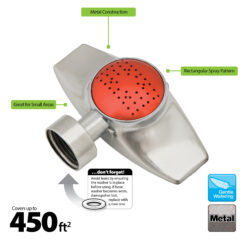Widespread Dry and Drought Conditions from the western Great Lakes to Texas, from Arizona to the Florida panhandle, and in the northern plains and the Pacific Northwest. Widespread Extreme and Exceptional Drought in Texas and Louisiana.

Condition Monitoring Report
Station Number: OH-HM-24
Station Name: Cheviot 3.4 W
Report Date: 9/1/2023
Submitted: 9/01/2023 9:43 PM
Scale Bar: Mildly Dry
Description:
August rainfall of 3.22 inches was only slightly below normal but only 0.37 inches of rain in the past 7 days and no rain in the past 6 days. Ground is dry and cracking. Lawns are beginning to show drought stress as are shrubs and trees. Some wilting and early coloring observed.
Categories:
General Awareness
Agriculture
Plants & Wildlife
Society & Public Health
.
 This report is specifically for the Arbor Doctor’s location 3.4 miles west of Cheviot, OH, in the western suburbs of Cincinnati in southwest Ohio. This location is also an official cooperative observation site for the National Weather Service listed as Cheviot 3W.
This report is specifically for the Arbor Doctor’s location 3.4 miles west of Cheviot, OH, in the western suburbs of Cincinnati in southwest Ohio. This location is also an official cooperative observation site for the National Weather Service listed as Cheviot 3W.
What is the Condition Monitoring Report? See these links for more information:
Explanation of scale bar>>>



Midwest U.S. Drought Monitor

30 Day Precipitation:

.
Ohio 30-Day Precipitation

.
Search condition monitoring reports for the entire US>>> 
Click on the title or the graphic (above) to access the
U.S. Weekly Drought MonitorPDF Version of Graphic 
Click on the title or the graphic (above) to access the
U.S. Monthly Drought OutlookPDF Version of Graphic 
Click on the title or the graphic (above) to access the
U.S. Seasonal Drought OutlookPDF Version of Graphic
Other Drought links:
Please remember to water…correctly!
Water once per week, one inch per week, under the entire branch spread, in the absence of rain, May through November. Either rainfall or your watering should equal the one inch per week. Do not water if the soil is already moist. Put out a sprinkler and a straight sided soup can or rain gauge and measure one inch per week. Measure the rainfall which falls in your yard. Your trees don’t care what fell at the airport!
If burlap was left on new trees, it will repel water and the tree or shrub may die. Be sure burlap and twine are removed from the top of all root balls. If your landscaper disagrees, refer him or her to the American National Standards Institute (ANSI) industry standard for installation of landscape plants.
To the extent possible recycle fallen leaves back into the soil around the trees and maintain mulch around the trees to a radius of at least 3-5 feet. Keep mulch off trunks. Use a coarse textured mulch. Avoid triple shredded mulch. Aged arborist wood chips ( https://getchipdrop.com/ ), mulched and composted leaves, pine bark, and pine straw are all good. Very finely ground mulches such as triple ground hardwood mulch are not beneficial and may inhibit moisture and oxygen exchange.
Drought: How Dry Seasons Affect Woody Plants >>>
>>>

















